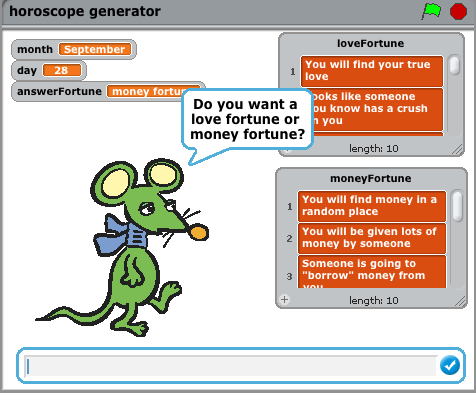Programming Possibilities: An Interview with Laura Webber of Roland Park Country School
Three years ago, Laura Webber went from being an English teacher of 12 years to leading high school Computer Science classes. How did she make the shift from reading essays to writing programs? She tells us that the process was more hands-on than anything – and enabled by Scratch. “You have to do it yourself. You have to play around with Scratch yourself and enjoy it and be creative and do what you're asking the kids to do.”
Laura's first transition from teaching English was mediated by a technology integration position. “At my previous school, they asked me to be the English teacher of a laptop pilot program and I just fell in love with what happened in my classroom. Instead of just sitting there and listening, the students could actually be writing and creating things. Everything just became a lot more alive, and I found that it made teaching a lot more exciting for me.” In her current position as the Upper School Technology Coordinator at Roland Park Country School, Laura oversees the AP Computer Science and introductory Computer Science elective courses.
Starting with students who have no prior programming experience, Laura looks to her English background to find the words that best explain computer science. “What I really have enjoyed about it is all the metaphor in computer languages. The way words are used in a computer language isn't that far off from how we might use them in English. In my classes, we’ll look at the syntax of a line in Java, and we'll talk about which part is the noun, which part is the verb. The linguistics of it is interesting to me.” Laura uses Scratch as a pathway to Java in her AP curriculum. She devotes the first six weeks of the semester to Scratch because “with Scratch, there's a lower entry point. We'll do a whole bunch of topics in Scratch and then when we revisit those topics in Java, we end up going through the AP curriculum quickly because they already know what a loop is, they know what a conditional is. A lot of people would think it's crazy to take six weeks out of an AP year to spend time doing introductory programming with Scratch, but in the last set of Java tests I gave, all of my students scored in the nineties.
The final project for the Scratch unit is a game. Laura takes this opportunity to link programming with other subjects, in addition to teaching analytical thinking. “I'll talk to my students and say, ‘What are you studying in English or History? Why don't you turn that into a game?’ It's fun to watch them analyze and theoretically turn what they’ve learned into a game in their head and think about how they might implement it. They think they're having fun making video games. But I'm listening to them talk out loud and they understand the material from their other class. Somehow they have internalized aspects of what they've learned in History well enough to turn it into a story. They get excited because it's different than memorizing the text. It means they have to internalize the ideas.Then they go ask if they can get extra credit from their History teacher.”

Laura’s teaching approach is analogous to her personal experience tinkering with Scratch. “I guess I teach the way I learn. For the first period or two when we start using Scratch, I make them go in and play around with it. Here's Scratch. Put the 'When Green Flag Clicked' there. Now just put some other things in and see what happens.
This year, a pilot STEM-track program has placed a group of twelve ninth-grade girls in Laura’s AP course, challenging her to come up with motivating lesson plans. Laura used Scratch projects to bring out the girls’ creative sides, helping them to build a horoscope generator and write a program that “tells you the initials of someone who has a crush on you.” Next year, Laura hopes to keep the girls inspired with projects that explore social justice issues as well as projects that are personally meaningful. “I think the girls respond to that. Either find social justice issues that we can turn into educational games or go around the school and figure out problems that people are having, like a real computer scientist would. Let's actually make something that's going to help somebody.”

The impact that Laura has made on her students was recently conveyed through conversations with a few of the ninth grade girls. “I’ve had some ask me, ‘Is there more? Is there something else I can take after this year?’ It’s nice to see them enjoy Computer Science and start to visualize themselves as potentially wanting to study it more. I think it caught the girls by surprise. They didn't necessarily sign up for it. It was recommended that they take it because they were on a special track. I don't think they realized that it was going to call on them to be so creative.“ And Laura attributes this to Scratch. “I think without having done Scratch, it would have been much more painful. If you started with Java in September with girls who are ninth grade who've never programmed before. How awful. They can't jump in and do a horoscope generator in Java.”
Laura encourages her students’ processes of constantly jumping in and exploring new possibilities. “I may think of three ways to solve something, and inevitably, there will be students in the room who will come up to me and say, ‘Wait a minute. I did it differently.’ And you have to make time in your class to show the alternative solutions so that everybody can see different ways of thinking. As a teacher, you have to allow that to happen. My way works, but you know what? So does yours.”

